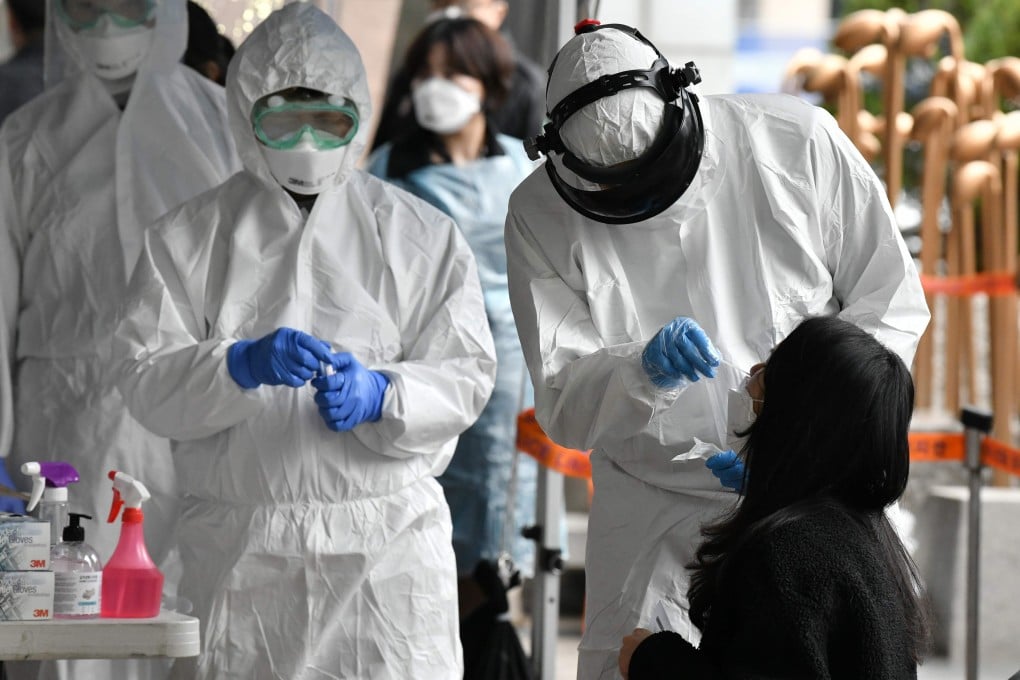Coronavirus: South Korea’s infection rate falls without citywide lockdowns like China, Italy
- South Korea had 7,513 Covid-19 cases as of Monday, with daily infections falling for a fourth consecutive day
- Officials attribute the decrease to mass testing, improved public communication and the use of advanced technology

As of end-Monday, it had 7,513 cases and 54 deaths. The Korea Centres for Disease Control and Prevention (KCDC) said there was an increase of 131 cases from Sunday to Monday.
The country averaged more than 500 new infections a day for the past two weeks, but last Friday, this number dipped to 438, then 367 on Saturday and 248 on Sunday. The daily number of confirmed cases is reported the following day.

His point was underscored by the KCDC, which said that among the new patients were more than 60 people who were infected while working in close proximity to each other at an insurance company call centre.
“The total number of new confirmed cases is on a downturn but there are concerns over such mass infection cases”, said KCDC Deputy Director Kwon Jun-wook.